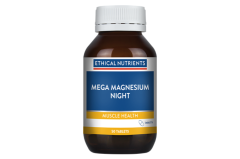When Robert Falcon Scott and his crew set off for the South Pole, two of the precious foods that they chose to carry with them were malted cocoa powders and milk chocolate bars. If you are facing temperatures of -22°C, searing winds and intense physical exertion, chocolate offers not only nutrition and calories but also comfort. Of course, even if you aren’t racing a bunch of Norwegians across the Antarctic, chocolate has a lot to recommend it. Chocolate is not just a food, it is an event, an expectation, a gift, a solace, a celebration and a companion. You will have turned to chocolate at some time, maybe even today, possibly as you read this. We all have. The question is whether you need to relax about enjoying your chocolate or is it too good to be true? Should you feel a little guilt about your chocolate indulgence? To answer that, we will have to look a little more closely at what chocolate is and dig into the research that suggests that it might even be a health food.
Aztecs to Aussies
The earliest evidence of chocolate consumption by humans comes from the town of Colha in northern Belize, where ceramic vessels have been found to contain traces of chocolate and have been dated to 2600 years old. In Central America, successive civilisations from the Olmec to the Mayans to the Aztecs embraced chocolate with gusto.
Think you’re a chocoholic? See how you measure up to the world’s first documented chocoholic, the Aztec king Montezuma. When Hernando Cortez and his Spanish conquistadors stumbled across him in 1519, he was in the habit of quaffing around 50 flagons of cacahuatl or xoxocatl every day. This drink was the forerunner of the hot chocolate we drink today.
If you want to make chocolate like Montezuma had it, try mixing cocoa powder with water (or wine), corn meal, vanilla and chillies. Tip this from one container to another to make it froth and drink it cold. Remember, the Aztec palate was very different to ours, so don’t expect this drink to be the luscious chocolatey experience you are accustomed to. In 1519, Cortez and his Spaniards very quickly decided to heat the drink and add sugar, while removing some of the spice. Even this sweetened form of chocolate took a while to take off in the European homeland, until the English began adding milk to their hot chocolate and a gastronomic phenomenon was born.
From that point, chocolate quickly became a drink for the nobility across Europe, but the masses enjoyed it too. By the mid-1600s, chocolate houses were all the rage and men of power would meet over cups of exotic hot chocolate to discuss affairs of state. The Queen’s Lane Coffee House on High Street, Oxford, in the UK, has been serving hot chocolate since 1650 and continues to do so. What really unleashed the dark power of chocolate, however, was the discovery that it could be consumed as a solid.
In 1828, a Dutchman named Van Houten found a way to press the cocoa butter out of the beans. With the cocoa butter removed, the beans could be pounded to a cake, then mixed with sugar and some of the original cocoa butter to make a solid. In 1879, the Swiss Daniel Petr added powdered milk to the solid chocolate and the rest, as they say, is delicious, I mean, history.
In 2024, global revenue from chocolate is expected to have reached US$254 billion (approx. AU$383 billion). In Australia, we generate US$3.5 billion (approx. AU$5.3 billion) every year, with that figure expected to grow by 8.5 per cent in the next two to three years. That breaks down to the average Australian consuming 32kg of chocolate per year. Chew on that figure.
Melting magic
Chocolate is based on cocoa, which comes from the bean of the cacao tree. The tree is thought to have originated in Brazil and now grows in tropical climates all over the world in places such as Venezuela, the Caribbean and West Africa. The botanical name of the cacao tree is Theobroma cacao, “Theobroma” being Greek for “food of the gods”.
Cocoa beans have more than 600 chemical components and 230 of these are believed to have possible health benefits. Many of these beneficial compounds are polyphenols (or flavonoids). In fact, the cocoa bean is naturally a richer source of flavonoids than broccoli or green tea. When the cocoa bean is processed, it produces cocoa solids that are rich in flavonoids, and cocoa butter, a fatty substance that contains no flavonoids. The types of chocolate available in the market reflect variations in the amount of cocoa solids and cocoa butter used, as well as the amounts of other additives.
The Food Standards Australia and New Zealand (FSANZ) definition of chocolate is based on the term “cocoa solids”, which it defines as the non-fat solids found in chocolate mass. According to FSANZ, all chocolate must contain at least 20 per cent cocoa solids. The three main types of chocolate available are “milk chocolate”, “dark chocolate” and “white chocolate”.
Milk chocolate: Probably the most widely consumed form of chocolate today, milk chocolate is made from cocoa butter, cocoa solids, milk, sugar and vanilla. Amounts of each of these will vary from product to product.
Dark chocolate: This is more bitter than milk chocolate, as it does not contain milk, it has more room for cocoa solids. It, therefore, contains more health-promoting flavonoids than its milky brethren. Some dark chocolates have 70–80 per cent cocoa and the rest is sugar, cocoa butter and sometimes vanilla.
White chocolate: It is a bit cheeky to call this chocolate as it contains no cocoa (and therefore no flavonoids) at all. White chocolate is made from cocoa butter, sugar, milk and vanilla.
A major part of chocolate’s appeal is its physical properties. Its texture is pleasant and matches its flavour, which is subject to the same panoply of ridiculous descriptors as is wine. What really defines the experience of chocolate, though, is its melting point. Chocolate melts at somewhere between 30 and 33°C, so that it is solid at room temperature but melts as soon as it hits your tongue. The melting point changes with the amount of cocoa fats present, so dark chocolate will generally melt the fastest as it contains the most cocoa solids. There is no doubt that chocolate is good to eat but is it possible that it might also be good for you?
Healer or vice?
When you eat chocolate, you are eating much more, or sometimes less, than cocoa and its flavonoids, depending on the form of chocolate you choose. It is also believed that modern processing of chocolate destroys a large port




